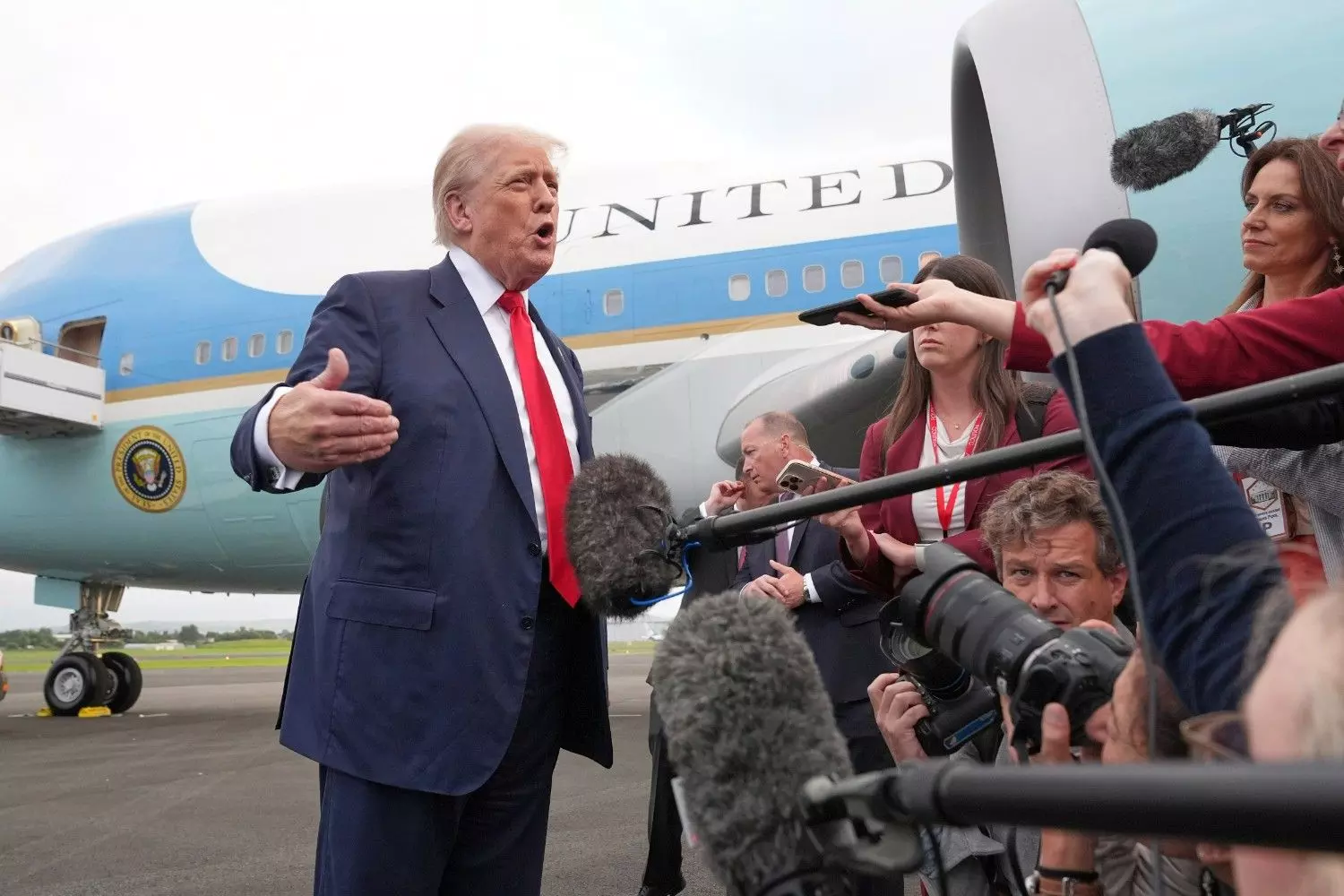
Trump’s strike on India is not surprising, what caused it is
Telltale signs that all is not well with Indo-US relations or trade negotiations was been clear for some time, what led to the sudden breakdown remains a mystery

US President Donald Trump’s bombshell 25 per cent tariff “plus a penalty” on India on Wednesday (July 30) shouldn’t come as a surprise. He has given enough hints in the past few days and also earlier that he was not happy with the way India-US trade negotiation was progressing – howsoever unjustified that may be from India’s point of view. What he meant by “plus penalty” is not clear yet.
Hours earlier, he had confirmed (“Ya, I think so”) to a reporter in Europe when asked about a report by an international news agency that said India was preparing to face higher tariff of 20-25 from August 1, in absence of a deal. The only explanation Trump gave then was: “India has charged basically more tariffs than almost any other country over the years.”
Is this temporary measure?
The said report quoted an unnamed Indian official as saying that 20-25 per cent tariff on India was assumed to be a temporary measure as talks had progressed well and would resume in the later part of August. The report also said India was holding off fresh concessions ahead of the Friday’s deadline – without revealing what the fresh concessions were about.
That Trump was indignant was clear earlier too.
India was expecting an early-harvest agreement but negotiations prolonged. It is understood that Trump had refused to give a go-ahead to the first phase of negotiations, which was to finalise the tariff lines broadly and leaving the finer details for later. What upset Trump then was not known, nor is now.
Also read: 5 reasons why Trump has imposed 25 pc tariff on India
Much earlier, in April this year, Trump had clubbed India with Vietnam, Japan and Korea as “bad actors” from tariff point of view, even though India had cut tariff on several items beginning with the February 2025 Budget to placate US companies.
Russia linkage a stretch
Now Trump has added two new elements to impose high tariff: “non-monetary trade barriers” and India’s military and energy ties with Russia at a time when Russia is at war with Ukraine. He loftily claimed “everyone wants Russia to stop the killing in Ukraine”.
Trump does have a point in non-tariff barriers India has erected, including Quality Control Orders and bans and restrictions on commodities, but the linkage with Russia is a stretch.
Trade expert Biswajit Dhar reacted by saying, “Trump can’t ask a sovereign country to stop its trade with any nation. He can’t penalise India for buying Russian weapons or energy. Has he ended relations with Russia or stopped talking to Putin (Russian President)? Has he stopped trading with China? Quite the contrary.”
Also read: Trump gives Putin 10-12 days to end Ukraine war, threatens tariffs
Dhar also disapproved of Trump’s unilateralism in imposing high tariffs, saying: “Trump has short-circuited the trade talk and is indulging in an extreme form of unilateralism. He should have allowed negotiation to continue and had he found it was not beneficial, he would have been entitled to say the deal was unacceptable. He can’t treat a trade partner this way.”
His advice to the Indian government is to stand firm in its stand and relations with Russia.
But perhaps the reason is more diplomatic.
Prime Minister Narendra Modi had skipped meeting Trump in the run up to the 2024 US elections, which he had contested and won, when he visited the US in September 2024. Modi had canvassed for Trump’s Presidential bid in 2020, which the later lost.
Modi's promise of 'MIGA'
In his bid to clinch an early trade deal, the Prime Minister had travelled to the US and met Trump in February 2024, during which he promised to ‘Make India Great Again’ (MIGA) by joining Trump’s ‘Make America Great Again’ (MAGA) to form a “MEGA partnership for prosperity”. He had also promised to “strengthen the oil and gas trade” with the US – signalling a strategic shift away from Russia.
Also read: US, EU seal trade deal with 15 pc tariffs
Since then, India gave Trump’s one-time ally Elon Musk’s Starlink all official clearance to enter satellite communication business; Musk’s Tesla has also set shop in India, though not for manufacturing. Talks with US firms on setting up nuclear energy plants using small modular reactors (SMRs) are progressing well.
India is now more open to crypto coins after the Trump’s second term. Two of the world’s largest US-based crypto exchanges, Binance and Coinbase, which had left India, re-entered in March this year. They are expected to start operating later this year.
Yet, what went so wrong for Trump to hit India so hard is difficult to decipher.

